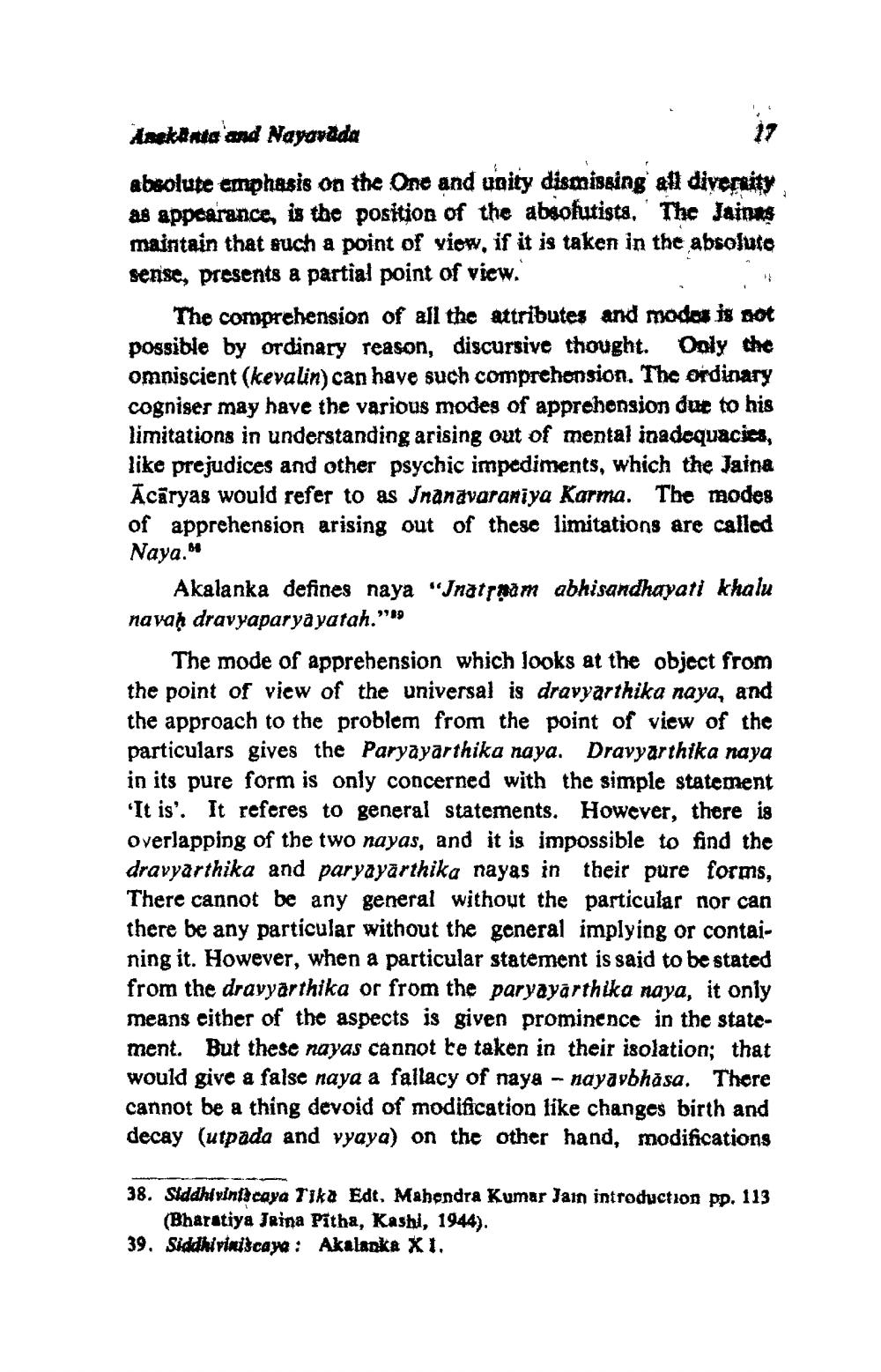________________
Anekinta and Nayovada absolute emphasis on the One and unity dismissing all diversity as appearance, is the position of the absolutists. The Jainks maintain that such a point of viow, if it is taken in the absoluto sense, presents a partial point of view.
The comprehension of all the attributes and mode is not possible by ordinary reason, discursive thought. Only the omniscient (kevalin) can have such comprehonsion. The ordinary cogniser may have the various modes of apprehension due to his limitations in understanding arising out of mental inadequacies, like prejudices and other psychic impediments, which the Jaina Ācāryas would refer to as Jnanavaraniya Karma. The modes of apprehension arising out of these limitations are called Naya."
Akalanka defines naya "Inatgnam abhisandhayati khalu nava” dravyaparya yatah."*9
The mode of apprehension which looks at the object from the point of view of the universal is dravyarthika naya, and the approach to the problem from the point of view of the particulars gives the Paryayarthika naya. Dravyarthika naya in its pure form is only concerned with the simple statement 'It is'. It referes to general statements. However, there is overlapping of the two nayas, and it is impossible to find the dravyarthika and paryayarthika nayas in their pure forms, There cannot be any general without the particular nor can there be any particular without the general implying or containing it. However, when a particular statement is said to be stated from the drayyarthika or from the paryayarthika naya, it only means either of the aspects is given prominence in the statement. But these nayas cannot be taken in their isolation; that would give a false naya a fallacy of naya - nayavbhasa. There cannot be a thing devoid of modification like changes birth and decay (utpada and vyaya) on the other hand, modifications
38. Siddhiviniscaya Tika Edt, Mahendra Kumar Jain introduction pp. 113
(Bharatiya Jrina Pitha, Kashi, 1944). 39. Siddhivindscaya : Akalaska XI.




